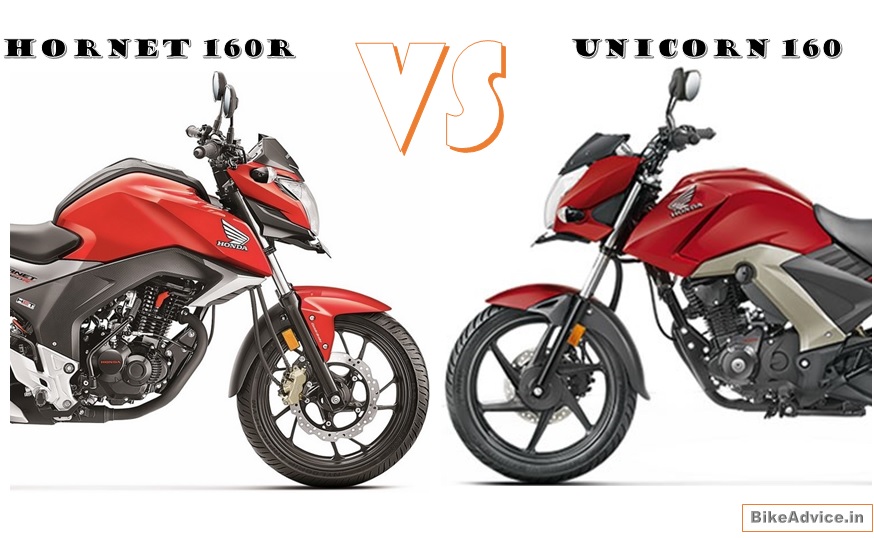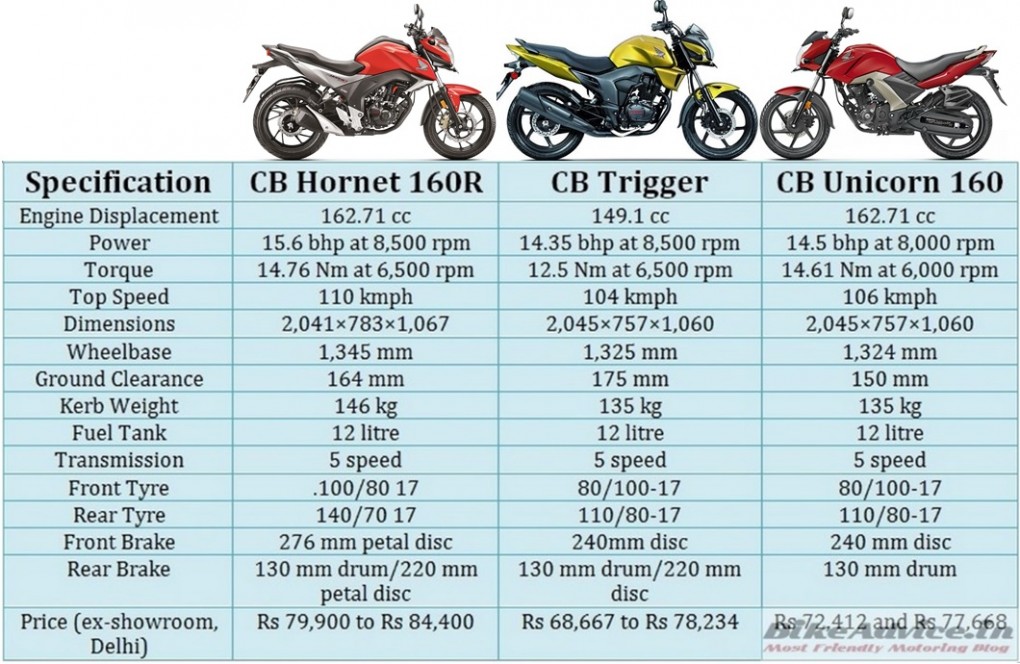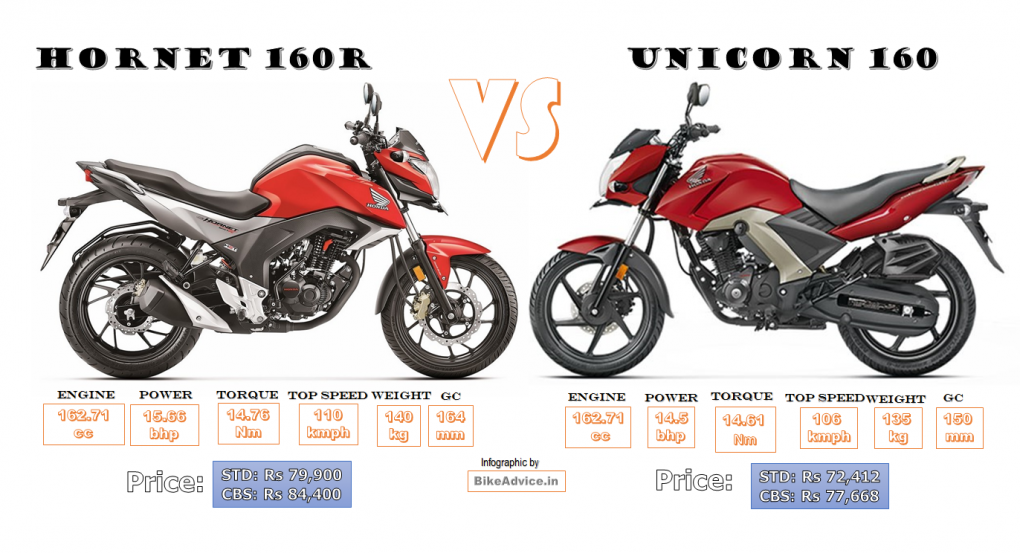Honda started its revival plans in the 150-160 cc segment last year when they launched the Unicorn 160 in December. As a premium commuter the bike has been doing pretty well but there is a big sub-segment – the premium sports 150-160cc which was lying untapped. And for the customers of this sub-segment precisely, Honda has pitched its best bet yet – the Hornet 160R!
Launched only day before yesterday, Hornet 160R turns out to be one interesting offering in this segment dominated by the Gixxers and the FZs.
Hornet 160R vs Unicorn 160: List of differences – COMPARO
Its natural to draw lines between two siblings, since the existing model becomes a benchmark. So, on what counts does the Hornet better the Unicorn 160… we list the major technical differences.
- Power: The engine displacement remains the same 162.71 cc but the output has now been tuned up. Hornet produces 15.6 bhp of maximum power against 14.5 bhp of the Unicorn 160. The peak power now comes 500 rpm later as well (Hornet – 8500 rpm & Unicorn – 8000 rpm).
- Torque: The torque graph is different – at 14.76 Nm peak torque of Hornet is marginally (0.15 Nm) better but again maxxes out 500 rpm later. (Hornet – 6,500 rpm & Unicorn – 14.61 Nm at 6,000 rpm). In the process, Hornet also becomes the torquiest motorcycle in the segment. Clearly, Unicorn has been tuned to be a city centric commuter whereas the Hornet gets a little more juice and can carry it higher up the rev band. Compared to this, the Trigger’s 149.1 cc mill produces 14.35 bhp of power and 12.50 Nm of torque.
- Emissions: The Hornet 160R is also the first bike in the segment to be BS IV compliant, ahead of the April 2017 regulation guideline.
- Bigger Disc Brakes: Hornet comes with a bigger 276 mm petal disc with a 3 piston calliper sourced from Nissin. The rear wheel gets an optional 220 mm petal disc brake. In comparison Uni gets the conventional 240 mm disc and a drum unit at the rear.
- Fatter Tyres: In comparison to the 80/100 front and 110/80 rear tyre, Hornet gets broader 100/80 and 140/70 tyres respectively.
- Wheelbase & GC: Hornet also comes with a bigger wheelbase of 1,345 mm and its ground clearance too has been increased to 164 mm (the Trigger beats it here with 175 mm clearance). The Unicorn 160 has a wheelbase of 1,324 mm and ground clearance of 150 mm.
- Weight: In the process, Hornet has gained 5 kg of weight and tips the scale at 140 kg (standard variant) as compared to 135 kg of the Unicorn 160.
Hornet vs Unicorn: Spec Sheet
Both Hornet and Unicorn get all digital instrumentation console. There are visual differences between both the motorcycles like the Uni comes with an H-shaped tail lamp whereas the Hornet has an X shaped LED tail light. The Hornet also gets a short stubby exhaust while both the Unicorn and Trigger get full sized canisters. The alloy wheels on the baby Hornet are more flashy and the seat more contoured.
Also Read: BMW G310R vs Duke 390 vs Mojo vs CBR 250R: Spec COMPARO
So, along with the sportier looks you effectively get more power, segment-best torque, better braking, fatter tyres on the Hornet by paying closer to Rs 10,000 more on the on road price. So, which one will you prefer…? Check out our BIKE COMPARO page for more motorcycle comparisons.






